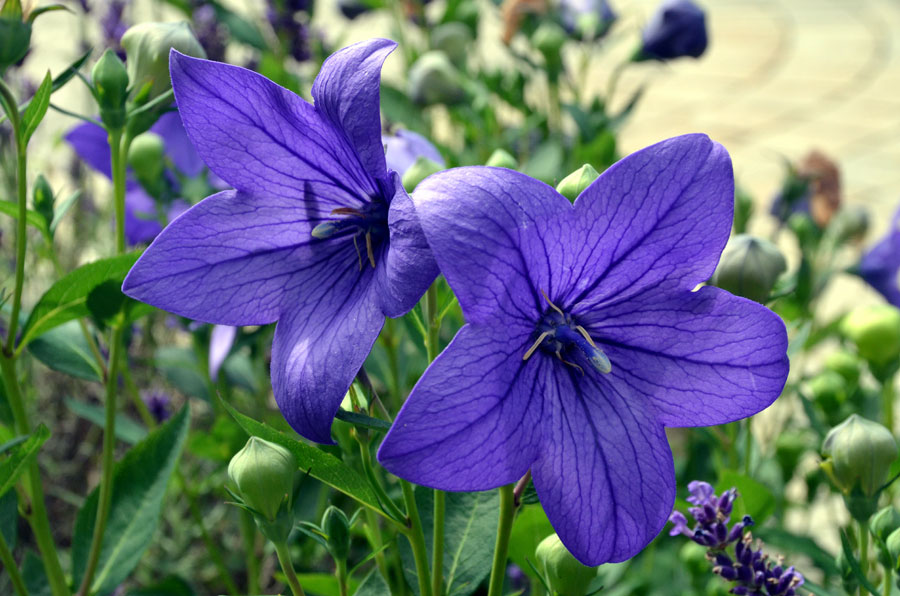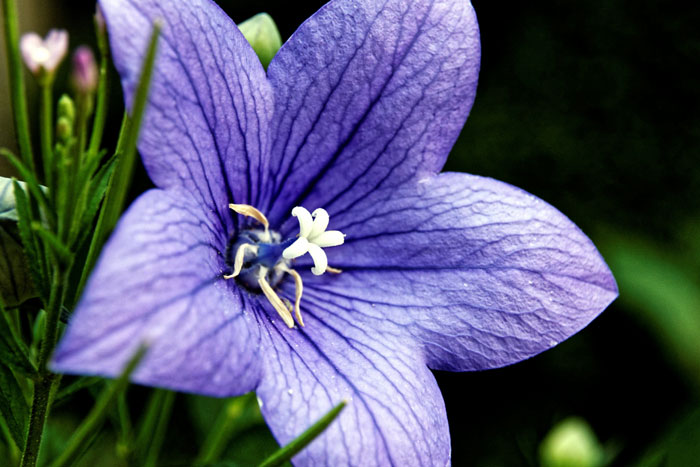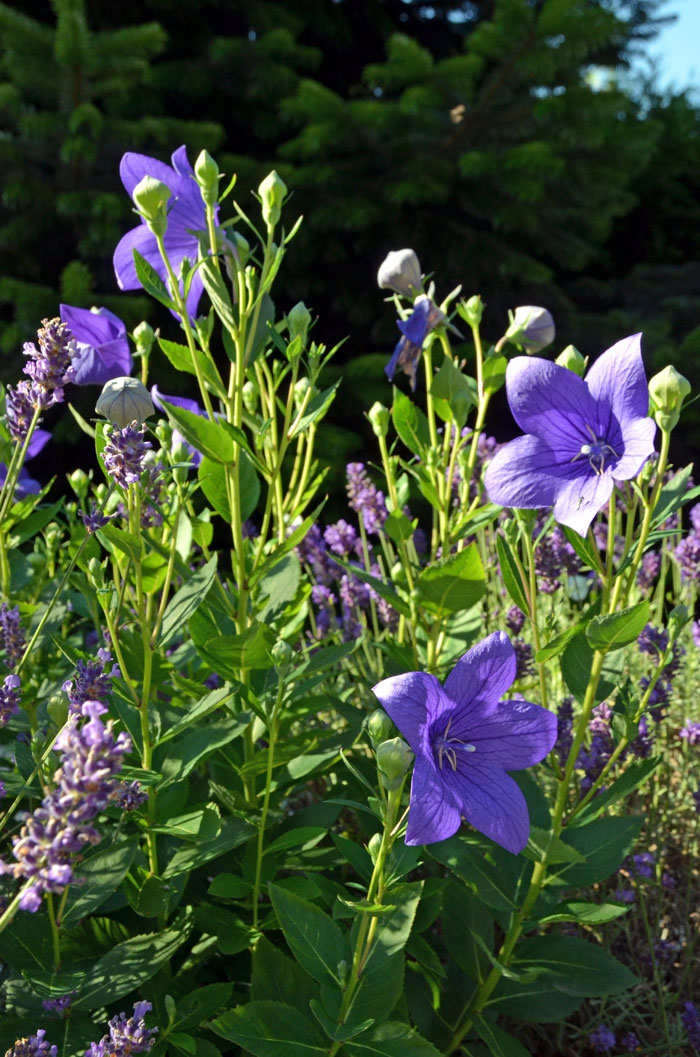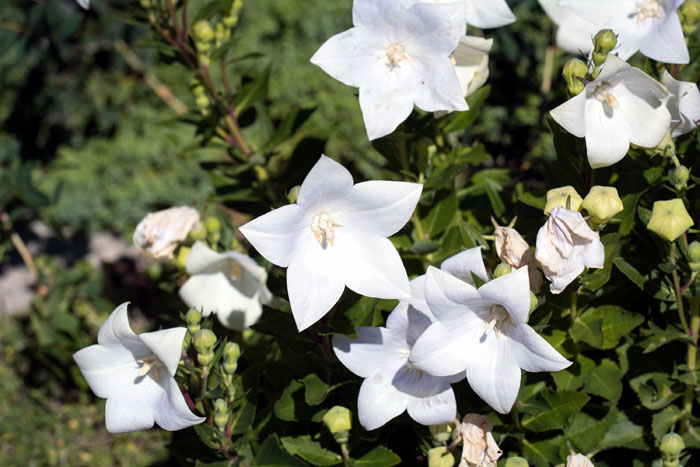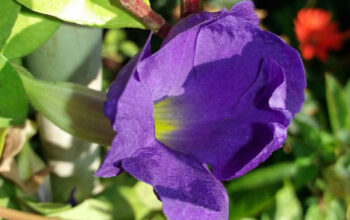Balloon Flower Plant (platycodon grandiflorus)
This herbaceous flowering perennial is the sole member of the genus Platycodon and is found in the family Campanulaceae. This plant comes from East Asia (China, Korea, Japan, and the Russian Far East). Also known as the Chinese bellflower, balloon flowers plant, platycodon grandiflorus, or platycodon, this flower is commonly referred to by its balloon-shaped buds.
This herbaceous perennial has dark green leaves and blue flowers in late summer. Its height and width are 60 cm. Its flower buds swell like a balloon before fully opening, making it stand out among plants. Similar to its relatives, campanulas, its petals are fused into a bell shape at the base.
In addition to exhibiting neuro-protective, antimicrobial, anti-inflammatory, anticancer, antiallergenic, insulin resistance, and cholesterol-lowering properties, the extracts and purified platycoside compounds (saponins) of the balloon flower root may be used in food supplements.
Overview Balloon Flowers Plant
Scientific name Platycodon grandiflorus
Common name Chinese bellflower, Japanese bellflower, Balloon flower.
Plant type Flowering perennial plant
Sun Partial shade
Soil Well-drained, slightly acidic soil
Soil pH 5.5- 7.5
Flower colors Blue, Pink, and White.
Blooming time Summer
Zone 3-9
How to Grow and Care Balloon Flowers Plant
It is easy to plant these plants in your garden without fear that they will encroach on your other plants.
Growing from Seeds
Spring is the ideal time to sow seeds directly in the garden or start them indoors. Make sure to cover seeds only 1/16 inch deep with soil. The container should be placed in a warm environment until the seeds germinate. The seeds can be transplanted outside once the weather has warmed up. Directly planted seeds, on the other hand, are unlikely to flower in their first year. Plant them after the last frost date in your area, however.
Growing from Cuttings
The balloon flower is a favorite of gardeners because it is a fast and hardy plant, so in fact, the more the merrier, but you do have to be cautious about how it propagates. Balloon flowers generally do not tolerate division, since their deep roots don’t like to be disturbed. Stem cuttings are the best method of propagation. To bare the stem, trim the lower foliage off a 4-inch length of stem using sterile, sharp pruners. Afterward, pot it in moist soil and apply the rooting hormone. While you wait for roots to take hold, keep your soil moist but not soggy. The cutting will have roots once you see leaf growth and feel resistance when tugged gently. Plants are then ready for transplantation into a garden.
Sunlight
Even though they grow well in partial shade, you’ll get more flowers if you give them eight or more hours of sunshine each day. You can leave them in some shade, and they might actually prefer shady areas where the afternoon sun is particularly hot.
Watering
Maintain a consistent level of moisture in the soil of young plants. As soon as they are established, balloon flowers crave a moderate amount of water in their soil. However, they can withstand short periods of drought. Water them only if the soil becomes dry after a long period without rainfall.
Soil
As for the soil, it prefers a well-drained, slightly acidic one, and while it can tolerate some drying, it requires plenty of moisture. Clay soil is not a suitable environment for these plants. The soil pH should be between 5.5 and 7.5.
Temperature and Humidity
If you have tall plants with heavy blooms, you should stake them to prevent them from toppling over. Warm temperatures in the range of 60 to 80 degrees Fahrenheit are ideal for balloon flowers. You should provide afternoon shade if you live in a hotter climate.
Providing they have the right amount of soil moisture, balloon flowers can tolerate humid or dry air conditions.
Fertilizer
Rich soil is typically enough to allow balloon flowers to grow without supplemental feeding. However, a layer of compost in the fall can provide them with energy to replenish what they used during the growing season. Early in the spring, apply an all-purpose, slow-release fertilizer to poor soil.
Pruning balloon plant
Pruning should be done as soon as the new growth is visible in the spring. It is important to remove dying or old stems at the base, but be careful not to damage the crown of the plant. Keeping your plants full of flowers all season long can be achieved by combining balloon flower pruning with dead-leafing (removal of spent leaves). By removing the fading bloom and the top leaves, you can keep more flowers coming.
Read also:
07 most popular kalanchoe species for your garden. Statice flowers growing and caring tips. Growing Houseplants in your home garden. How to grow and care for snapdragons plants. Growing Asparagus in your home garden. Perennial Delphinium plants growing guide. How to care for orchids flowers. Insulin plants growing and caring tips. Sugarcane plants growing guide.
For Pin:

